BACKCOUNTRY PROTECTION, CONSIDERATIONS AND SEVERAL GOOD OPTIONS.
STORY AND PHOTOS BY DAVE WORKMAN
I’ve lost count of the times I’ve been in, or emerged from a trek into the backcountry and said to myself, “I sure wish I’d had…” such and such a firearm. A little analysis of this repetitious process brings me around to acknowledge there is no correct answer to, “If I could only take one gun, it would be…”
There are really but three pertinent considerations when arming up for a journey into the High Lonesome: Caliber (as opposed to brand/model of firearm), Weight and Purpose.
PERSONAL PREFERENCE
Let’s begin with caliber: My personal minimum after decades of life in the Pacific Northwest—where we sometimes encounter “things with teeth”—is the .357 Magnum. Loaded with heavier bullets, it will stop predators, put deer and even elk down for the count and is a formidable choice in the event one encounters a two-legged menace.
My choice for the trail in this caliber is a vintage Smith & Wesson Model 19 with a 2.5-inch barrel, adjustable sights and checkered wood grips carried in an old leather Bianchi Shadow pancake-style holster. It weighs 32 ounces empty and is carried with six spare rounds in a belt slide on the opposite side.
I don’t carry speedloaders in the backcountry because they can get lost where spare cartridges on your belt are always there.
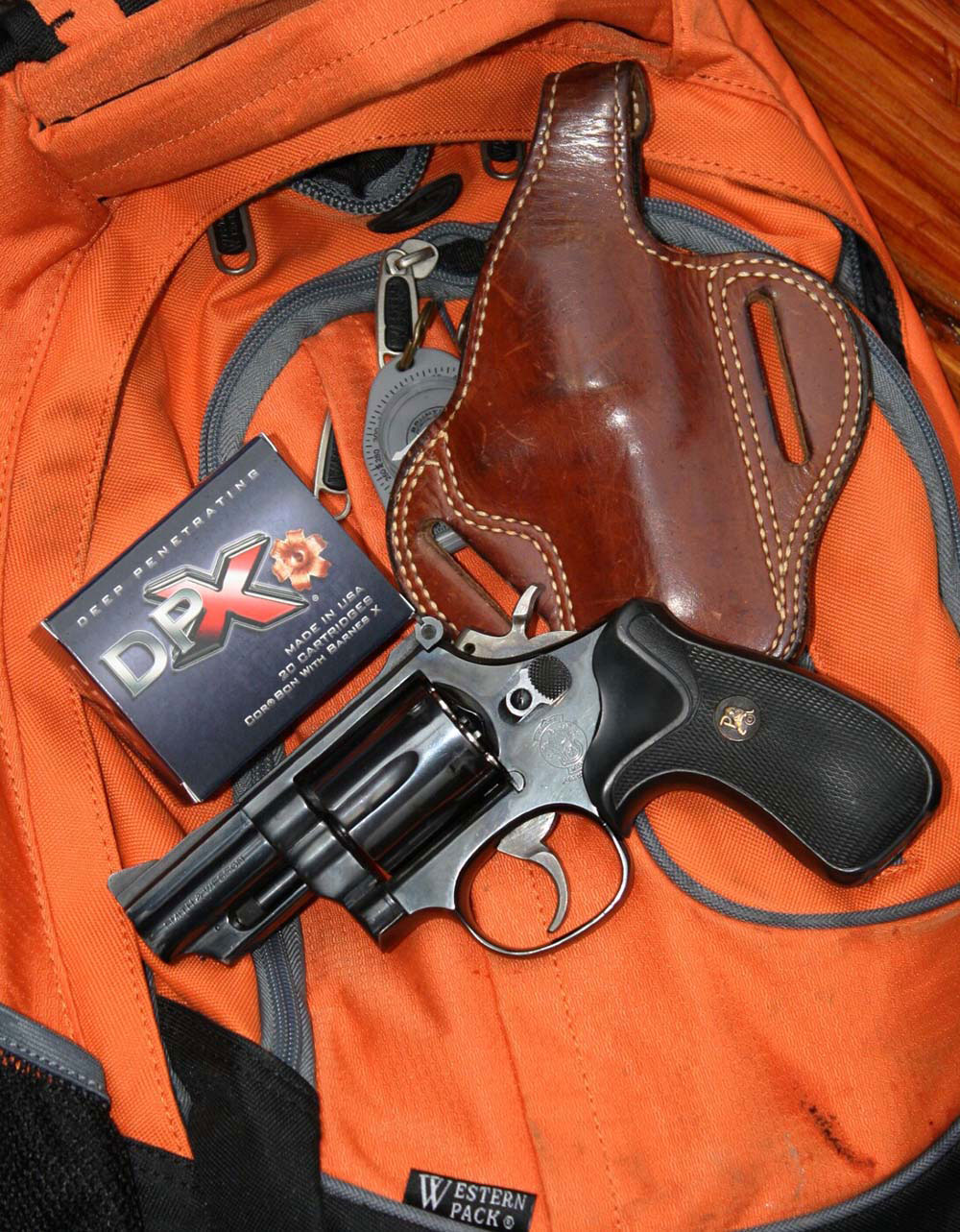
This model is not in the current S&W lineup, so you’d have to shop for it used. If you find one in good condition, you will not be disappointed. Every such model I’ve ever fired was accurate and reliable, but I recommend replacing the factory rounded grips with a replacement, and for those sensitive to recoil, nothing beats a Pachmayr rubber replacement grip. A currently offered option with the same size K frame is the S&W Model 66 with 2 ¾-inch barrel in stainless steel.
OTHER OPTIONS
Good alternatives include the S&W Model 27 or 28, Ruger Blackhawk single-action with the 4 5/8-inch barrel or the Ruger GP100 or SP101 with a 3-inch barrel. The SP101 holds five rounds while he GP100 holds six. Charter Arms’ Mag Pug is a five-shot .357 Magnum, and is available with a 3-inch barrel and adjustable rear sight. Colt has reintroduced the King Cobra and it carries comfortably at 28 ounces with a 3-inch barrel. The advantage of the .357 Magnum is that it will also chamber .38 Specials for taking small game, if that is one of the intended uses.
“My personal minimum after decades of life in the Pacific Northwest—where we sometimes encounter “things with teeth”—is the .357 Magnum.”
A Ruger Blackhawk is also a good choice. Don’t be fooled by the single-action “cowboy” style of this sixgun. It’s a little slower to reload, but the Blackhawk is an accurate handgun in any caliber. As once noted by Wyatt Earp, “Fast is fine, but accuracy is final.”
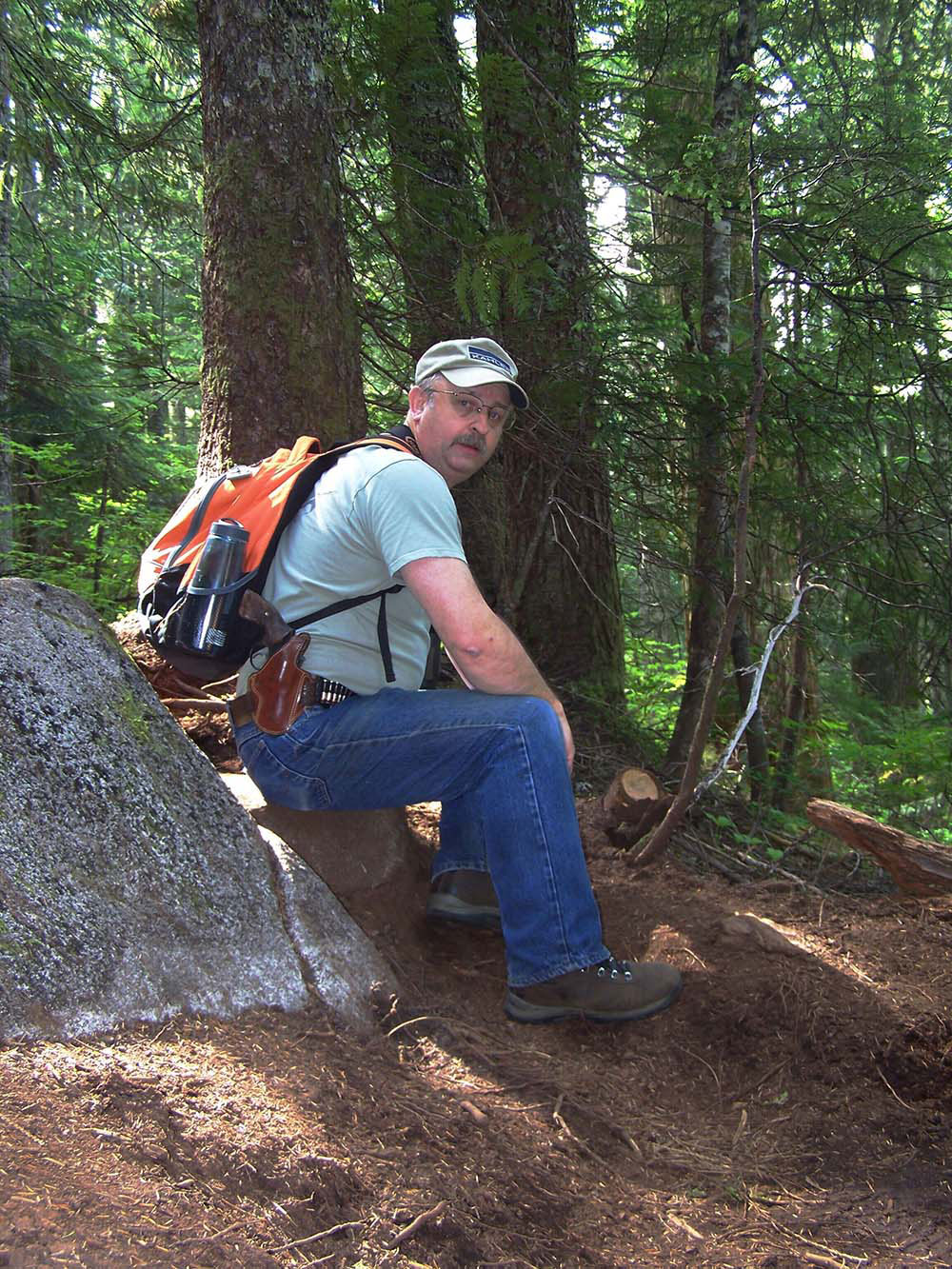
I’ve known people to have taken nothing more potent than a .22-caliber pistol in the backcountry, and they do just fine. When it’s all you’ve got, you quickly learn to make the most of it.
If a .22 is your choice, I suggest making it a .22 Magnum, such as the Ruger Single Six single-action revolver with its interchangeable cylinders. It hits the scale at 32 ounces empty. Magnum rimfire ammunition is more expensive, but it doesn’t weigh that much more, and it is more potent than a standard .22 Long Rifle. A box of 50 magnums can fit into the side pocket of a backpack without adding much weight or bulk.
Moving up the scale, I recommend anything in 10mm upwards, because it is not just the gun, but also the caliber that is important. There are two magnum calibers worth consideration: the .41 Magnum and .44 Magnum. The .41 Magnum produces slightly less recoil and a slightly flatter trajectory, but the .44 Magnum is more popular, and there are more ammunition choices. Their chief drawback is weight, which we will discuss in a moment.
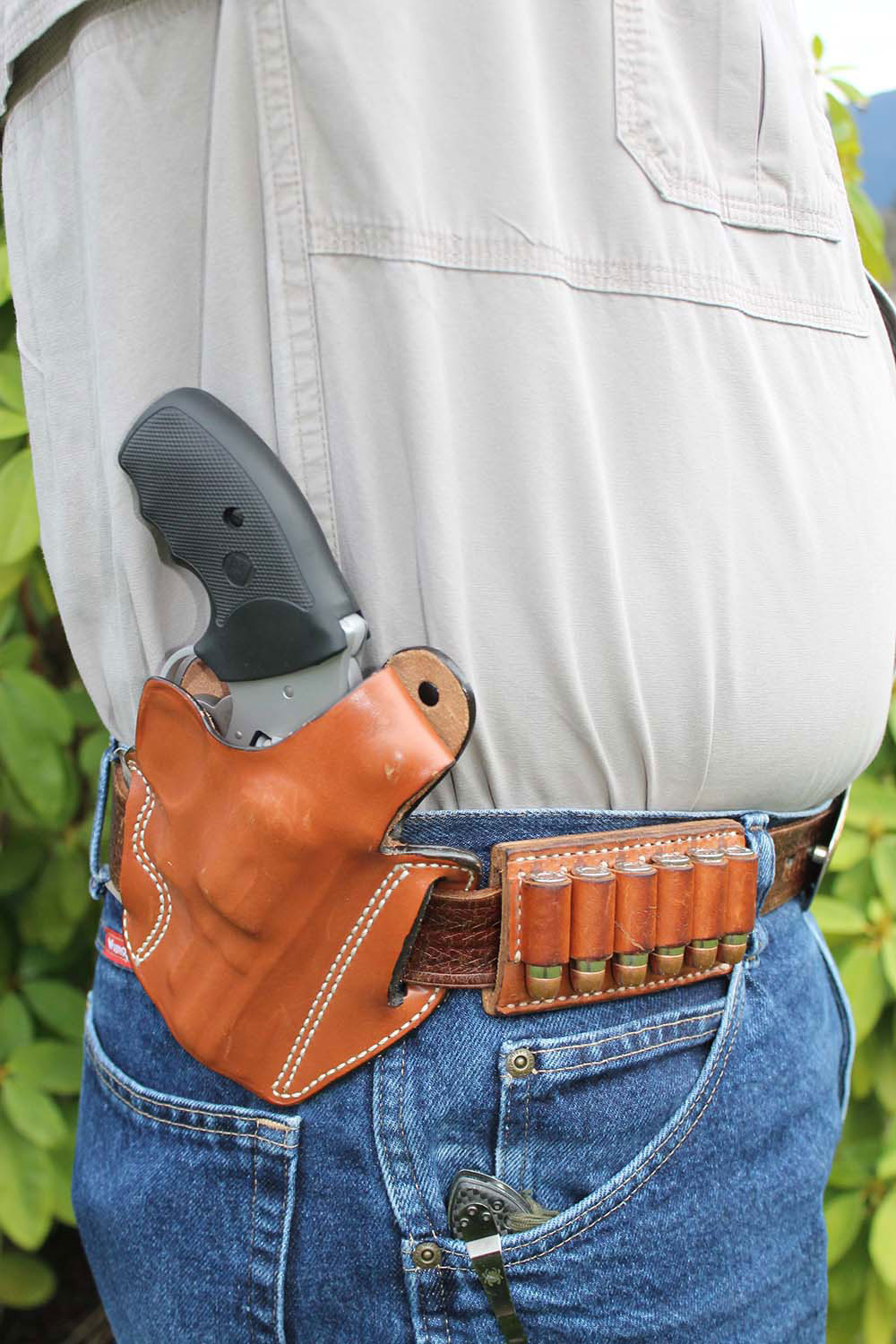
Don’t discount the .44 Special or .45 Colt in good revolvers from S&W, Ruger, Charter Arms or Colt. Both are potent rounds pushing big bullets with a devastating impact on anything they hit. I have hiked the mountains with a Ruger New Vaquero in .45 Colt and never felt poorly armed. My preference leans toward the .45 only because—depending upon your region—it is easier to find ammunition.
“I have hiked the mountains with a Ruger New Vaquero in .45 Colt and never felt poorly armed.”
The only semi-auto I’d suggest is a 10mm. The power range comes in between the .357 and .41 magnums, and they are used in semi-autos primarily. I never recommend buying a revolver chambered for a semi-auto cartridge.
If you choose a semi-auto pistol, have at least two spare loaded magazines safely carried on your belt or a double pouch on the shoulder strap of your chest holster, where they will always be within reach and with the gun if you need to move fast.
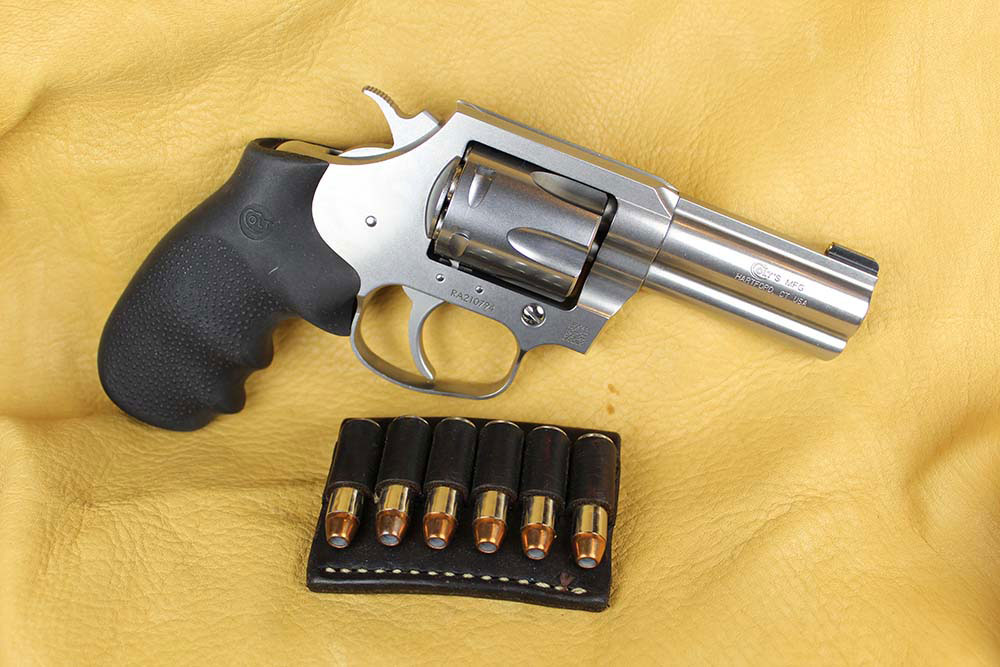
POUND FOR POUND
Weight is the next important factor, and it is never to be under-estimated. If you pack a 3-pound sidearm for any length of time on foot, you are going to notice it. Thus, I advocate short-barrel handguns to save weight. S&W some years ago introduced a series of double-action models they called the Mountain Gun, which have tapered barrels to reduce weight. The downside of this is that the lighter guns will deliver more felt recoil, but then again, I’ve never really felt recoil when shooting at live game.
WHAT’S THE PURPOSE?
If all you’re taking a gun for is to provide meat for the pot, even Mossberg’s Shockwave in 12
gauge will suffice when stuffed with birdshot, provided a grouse or rabbit lets you get close enough. For bigger challenges, buckshot or a slug is all the “no” you need!
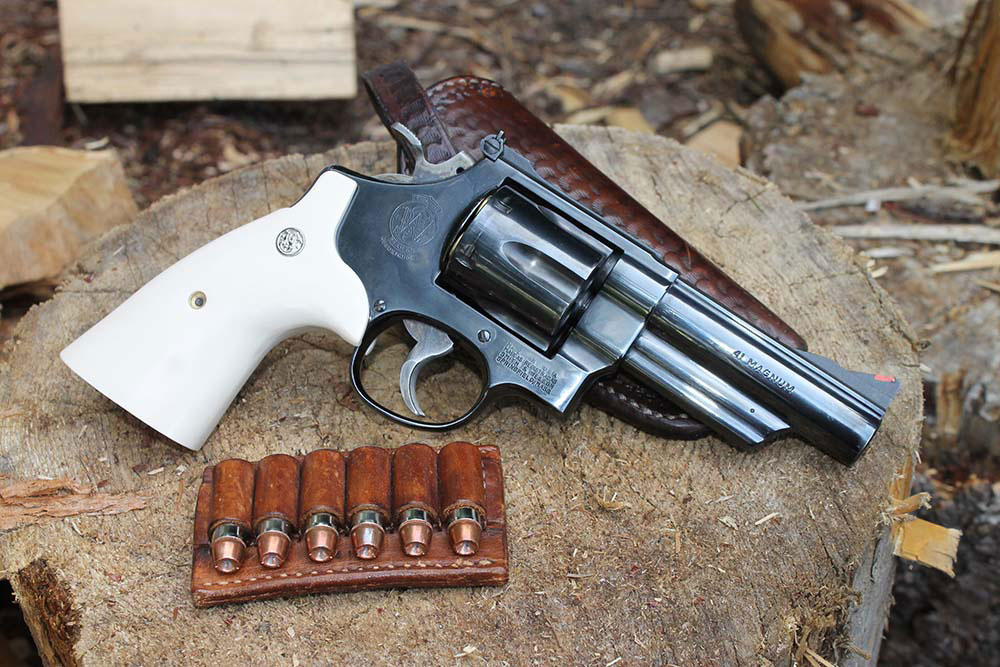
CARRY IT
Carrying a handgun often works best in a chest holster. One of my pals carries a 10mm Glock in such a rig, keeping it handy and it doesn’t conflict with shoulder straps of a backpack.
For the backcountry, a good leather or nylon holster would be my choice over a hard-molded synthetic primarily because of cracking concerns. Lots of bad things can happen in the high country, and equipment can fail even when it’s not supposed to.
HOW MUCH AMMO?
Because the handgun is a piece of emergency survival equipment, one needn’t be carrying lots of spare ammunition, but you should be carrying some. Since you’re not target shooting, 12-18 rounds should suffice, and in addition to the six on my belt slide, I tuck an additional 12 into my pack inside an MTM plastic Ammo Wallet. These take up almost no space at all, and protect the cartridges inside.
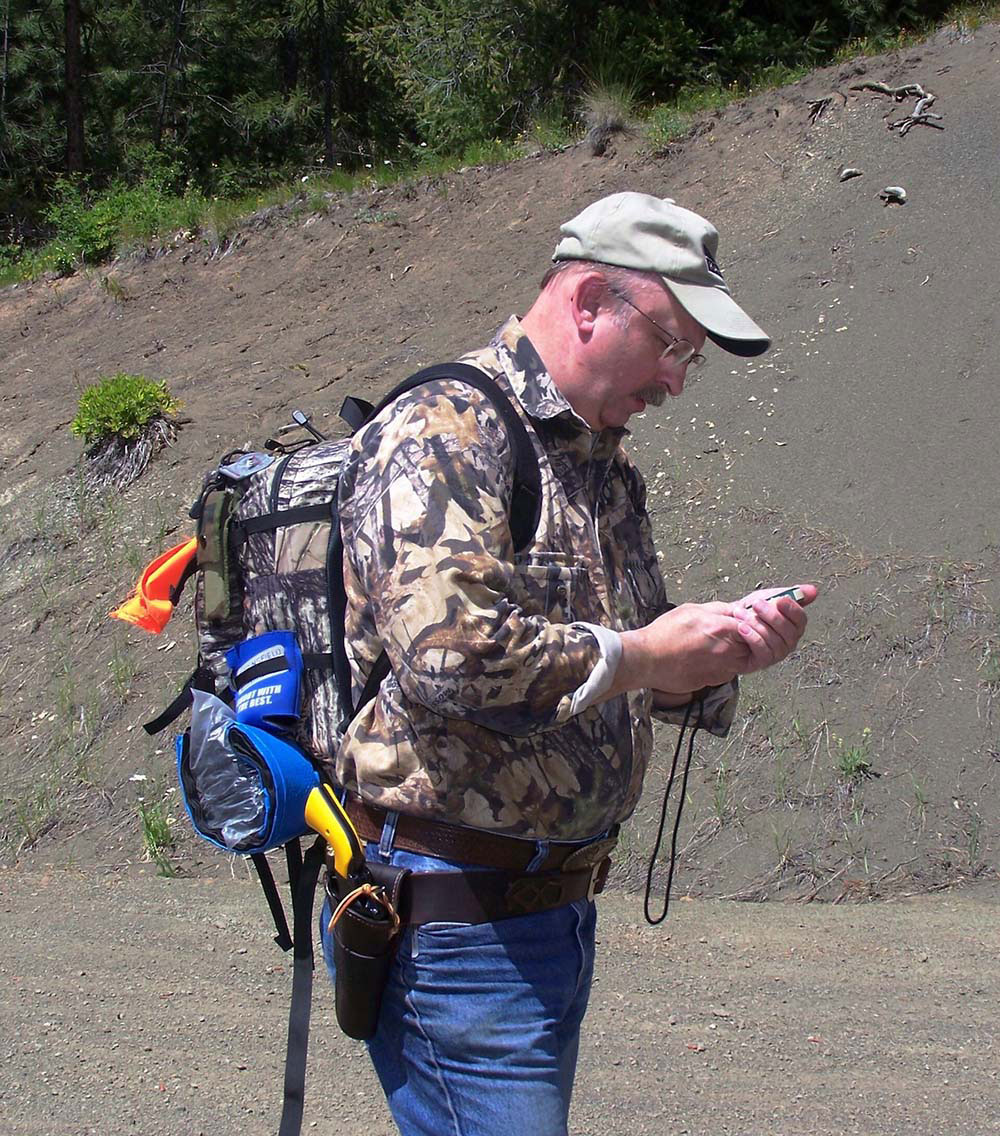
WHAT ABOUT RIFLES?
I haven’t touched on this because we’re not really talking about hunting here. However, if you want a rifle for the backcountry, I suggest a lever-action because the tubular magazine never leaves the gun. It should not be overly heavy and of a potent caliber. There are lever-actions in .357 and .44 Magnum, plus .45 Colt made by Rossi, and Marlin has a lever-action in .45-70, which is a devastating caliber. The trail rifle should have a sling, and a spare cartridge carrier should be wrapped around the buttstock.
STAY ALERT
No firearm is perfect for the backcountry, but with some careful consideration, you can determine if a gun is suited to you and your endeavors. Always practice the safety rules and be aware of your surroundings. Remaining alert in the wilds is the best way to get back safely.
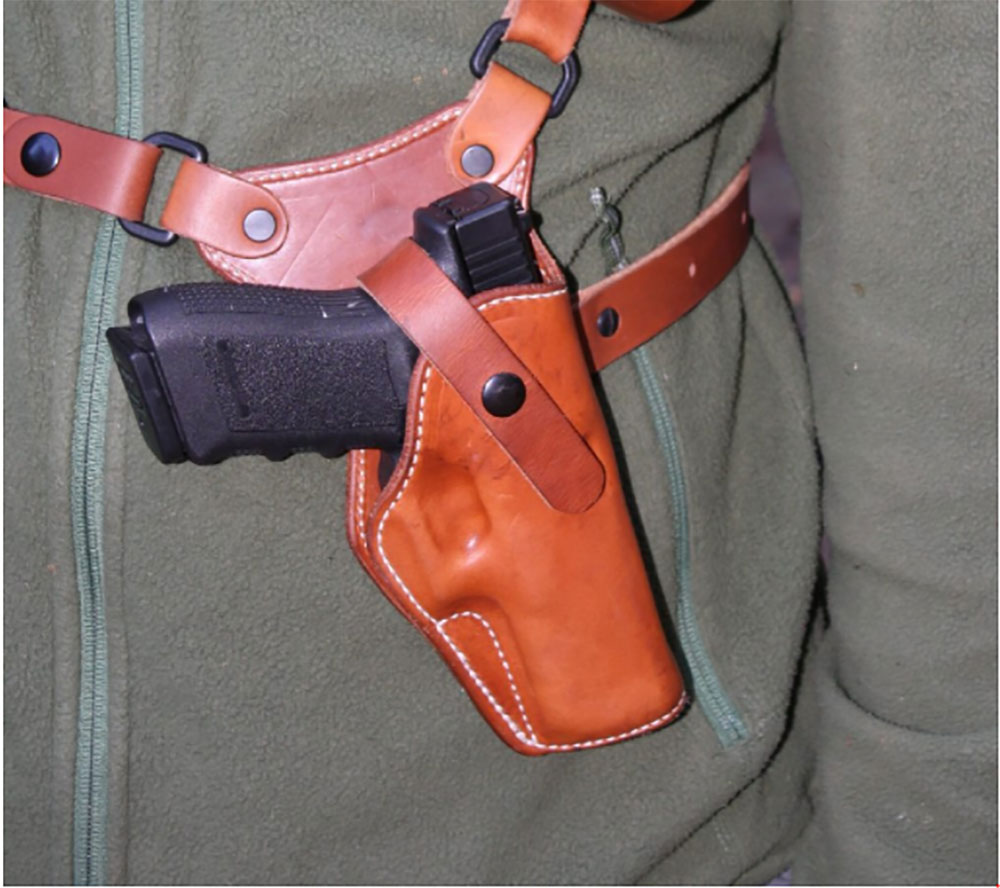
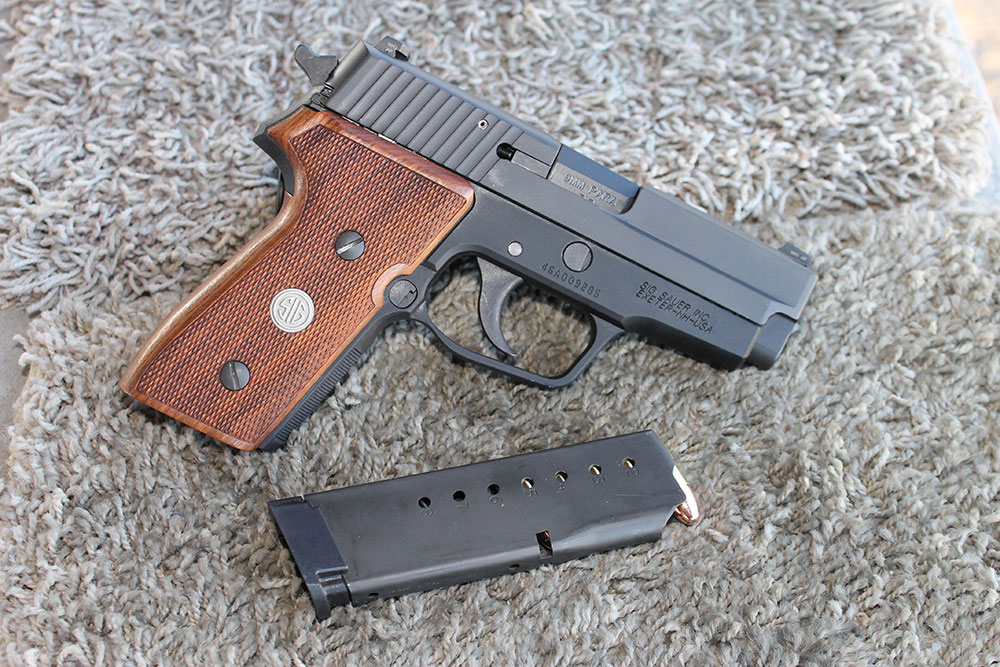


SOURCES
Smith & Wesson
www.Smith-Wesson.com
Sturm, Ruger & Co.
Ruger.com
Colt’s Manufacturing
www.Colt.com
O.F. Mossberg & Sons
www.Mossberg.com
Charter Arms
charterfirearms.com
TOP PICKS AMONG HANDGUN CARTRIDGES
Choose the sidearm with which you are comfortable, not because someone — including me — recommended it. That said, in no particular order, here are the top five handgun calibers for the backcountry:
.357 Magnum
10mm (semi-auto)
.41 Magnum
.44 Magnum
.45 Colt
* Honorable mention .44 Special
WEIGHING IN ON THE MATTER
Let’s take a quick survey of weight of some specific models.
Charter Arms .45 Colt: 20 ounces (5-shot)
Charter Arms .44 Special: 21 ounces (5-shot)
Colt King Cobra fixed sight (3-in.): 28 ounces
Glock 20 G4: 30.69 ounces
Ruger SP101, fixed sight (3-in.): 27 ounces (5-shot)
Ruger GP100, fixed sight (3-in): 36 ounces
Ruger Blackhawk (4 5/8-in.): 38-42 ounces (depending upon caliber)
Ruger Super Blackhawk (4 5/8-in): 45 ounces (.44 Magnum)
S&W Model 27 (4-in.): 42.1 ounces
S&W Model 57 (4-in.): 47.5 ounces
S&W Model 29 (4-in.): 43.8 ounces
Add a few ounces to each gun for cartridges. This provides an idea about backcountry carry, but balance that against your personal safety and one must admit it is better to have a gun in the wilds and not need it, than to need one and not have it.
A version of this article first appeared in the March 2022 issue of American Outdoor Guide Boundless.

